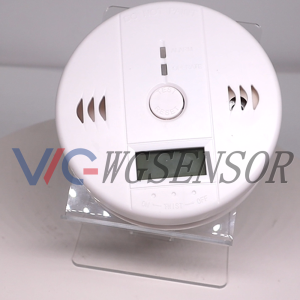Carbon monoxide (CO) detectors have become a vital element in modern household safety systems, serving as a frontline defense against a silent and potentially lethal threat. These devices are designed to detect the presence of carbon monoxide gas, an odorless, colorless, and tasteless substance that can pose significant health risks when inhaled.
What makes carbon monoxide particularly dangerous is its ability to go unnoticed without proper detection equipment. Often called the “silent killer,” CO is produced by incomplete combustion of fuels such as gas, oil, wood, and coal, commonly found in household appliances like furnaces, stoves, water heaters, and fireplaces.
Carbon monoxide interferes with the body’s ability to carry oxygen, leading to symptoms ranging from headaches, dizziness, and nausea to more severe outcomes like unconsciousness and even death in high concentrations.
The functionality of a CO detector is relatively simple yet crucial. These devices contain sensors that continuously monitor the air for the presence of carbon monoxide. When CO levels reach a certain threshold, the alarm is triggered, alerting occupants to evacuate the premises and seek fresh air immediately.
There are primarily two types of carbon monoxide detectors: biomimetic and electrochemical. Biomimetic detectors use a gel that changes color upon exposure to CO, while electrochemical detectors employ chemical reactions to generate an electric current when CO is detected, activating the alarm.
Placement of CO detectors is key to their effectiveness. It’s recommended to install detectors on every level of a home, including the basement, and near sleeping areas. Regular maintenance, such as testing the alarm monthly and replacing batteries annually, is essential to ensure these devices function correctly.
Education about the dangers of carbon monoxide and the importance of having functioning detectors cannot be overstated. Many fatalities and illnesses related to CO poisoning are preventable with the use of these devices and increased awareness.
In many regions, installation of carbon monoxide detectors is either mandated by law or strongly recommended by safety agencies to protect residents from potential hazards. As technology advances, newer models with enhanced features such as digital displays, voice alerts, and smartphone connectivity have further improved their effectiveness and convenience.
In conclusion, carbon monoxide detectors serve as crucial guardians of household safety, providing an early warning system against a silent but deadly threat. Understanding their significance and ensuring their proper installation and maintenance are essential steps in safeguarding against the dangers of CO poisoning.


Please contact us for free quotation by form below. We promise the quickest response within 24 hours: